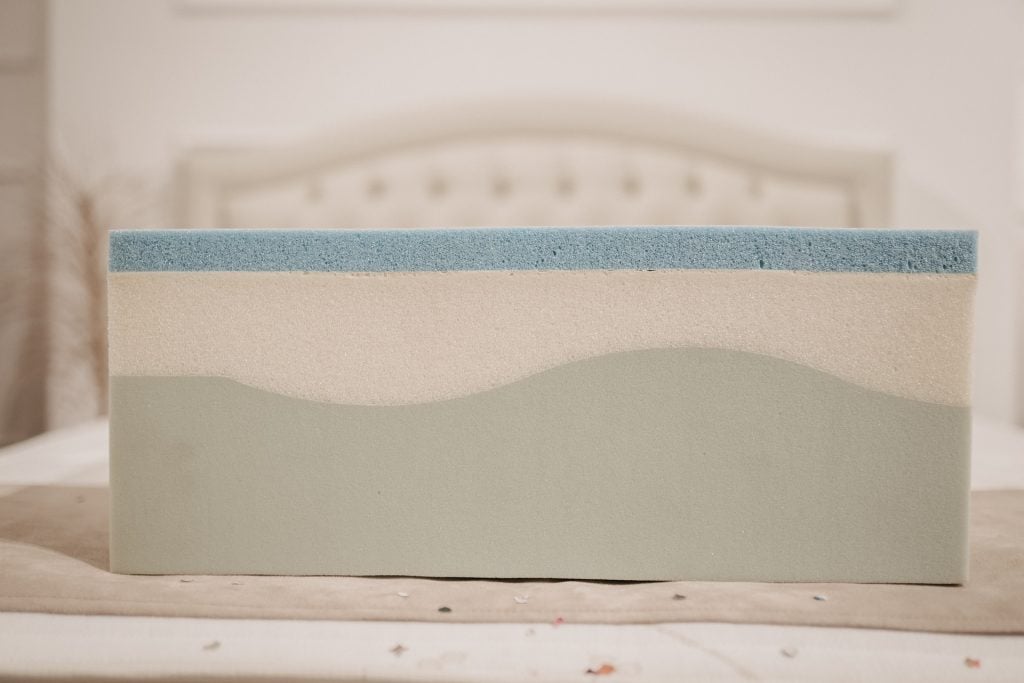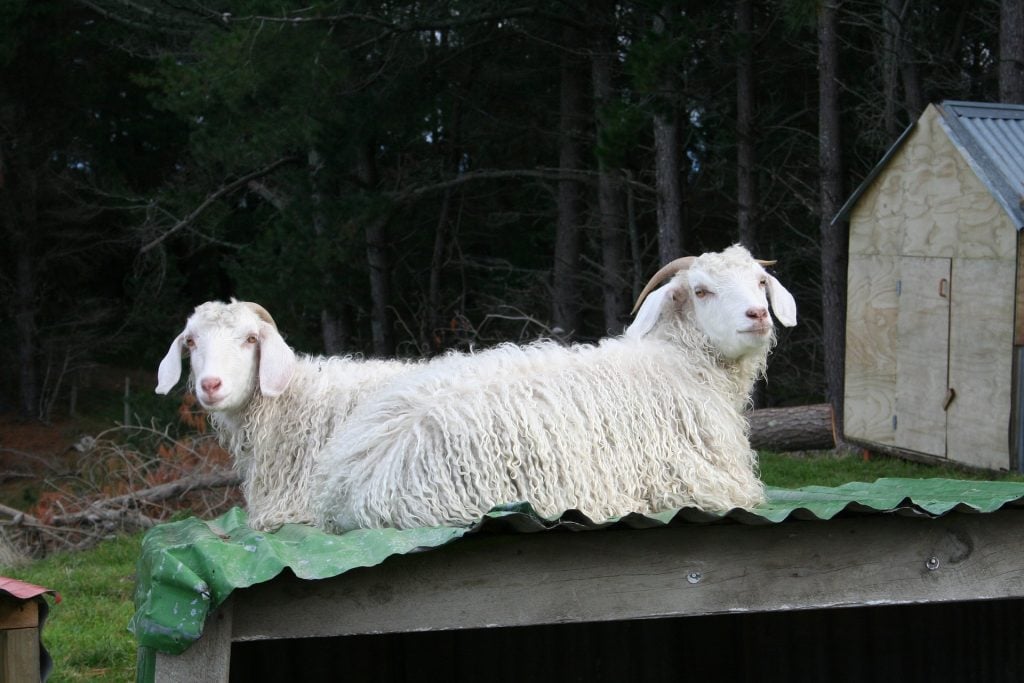When purchasing a new mattress, it’s important to understand what fillings are available and what might be best suited to you. The categories that mattress fillings usually fall into are natural or synthetic, both of which have a range of beneficial properties. Firstly, let’s kick off with what synthetic fillings have to offer…
Renowned for its hypoallergenic properties, polyester-filled mattresses are perfect for hayfever and dust mite allergy sufferers. Because polyester fibres are tightly woven with small pore sizes, it makes this particular fabric stronger than its natural counterparts. On top of this, the smaller the pore size means it’s harder for allergens and dust mites to pass through, therefore making polyester the strongest fibre-filled mattress in terms of being hypoallergenic.
 Polyester fibres
Polyester fibres
Similar to polyester in the sense that it’s hypoallergenic, this is about the only resemblance that both of these materials hold. Made up of millions of tiny holes, memory foam works by seeping out air when pressure is applied, allowing the material to mould to the contours of where this pressure is placed. A fantastic filling type for those who like to feel they’re sinking into their mattress, memory foam is also known for its heat retention qualities. When you are laying on a memory foam mattress, the air passages have been blocked which therefore makes it much easier for the heat to retain. All in all, we recommend steering clear of a memory foam mattress if you already get too hot at night, because this will only make you hotter.
Again, this hypoallergenic option is fantastic for hayfever sufferers as well as people who are searching for a firmer foam mattress. Reflex foam also tends to be cheaper when compared to memory foam as its production processes and costs are shorter and lower respectively. Comprising small bubbles instead of holes, they move to the side when pressure is applied to the surface. This still provides a similar body moulding aspect yet does so in a firmer sense.
 Layers of foam
Layers of foam
By comparison to synthetic fillings, it can be said that almost all-natural fibre fillings have larger pore sizes, which makes them more susceptible to allergens and dust mites being able to pass through. Overall, whilst hayfever and dust mite allergy sufferers can use these mattresses, they tend to encourage more build-up of allergens than their synthetic counterparts. If you want a natural fibre filled mattress, there are ways you can combat this issue through allergy-proof bedding.
One of the most popular natural fillings across so many mattress brands, it’s easy to see why cotton is the go-to. Cotton is highly breathable and absorbent, meaning it can wick away excess moisture throughout the night and create a dry sleeping environment. This is usually the reason why cotton fibres are used in the comfort or top layer of the mattress.
Mirroring similar temperature-regulating properties to cotton, you can also rely on the insulating nature of wool in the winter too. Brilliant at wicking away moisture, natural wool mattresses are excellent at controlling humidity throughout the night, especially so when compared to synthetic materials.
 Lamb
Lamb
Upholding all the same properties as wool because lambswool is quite literally the wool of lambs rather than sheep. Overall, this makes for a much softer fibre in comparison to standard wool.
Alpaca wool is known for its extreme softness, durability and temperature-regulating properties. Highly proficient at wicking away excess moisture, you can also rely on a mattress filled with alpaca wool to be around for many years due to their robustness.
A more obscure fibre used in mattresses, mohair originates from the wool of an Angora goat. Upholding elasticity, durability and softness, this fibre is usually used closer to the top layer of the sleeping solution as it retains its shape for years and has fantastic temperature-regulating qualities too.
 Angora goats
Angora goats
Another fibre from goats, cashmere presents a more luxurious alternative to lambswool. Utterly soft, absorbent and breathable, you can rely on cashmere fibres to provide a comfortable and silky smooth feel, as well as being able to wick away excess moisture much like other natural fillings.
Produced by silkworms which are then spun into silk fabric, it’s used across a multitude of luxury mattresses. Silk is similar to the more high-end natural fibres discussed here due to its ability to control moisture levels alongside being incredibly soft. You can rely on silk fibres to provide a dry, fresh and cool night’s sleep.
This natural filling is completely different in structure in comparison to all the other natural fillings discussed here. Latex is tapped out of rubber trees and manufactured into a spongey, foam-like surface layer. Elastic and highly responsive, latex moulds to the contours of your body in a spongier way when compared to memory foam. The biggest difference between latex and memory foam is that latex is very breathable and much more durable, with some latex mattresses retaining their original shape for over 10 years. Therefore latex mattresses are often worth the investment.
 Latex tree
Latex tree